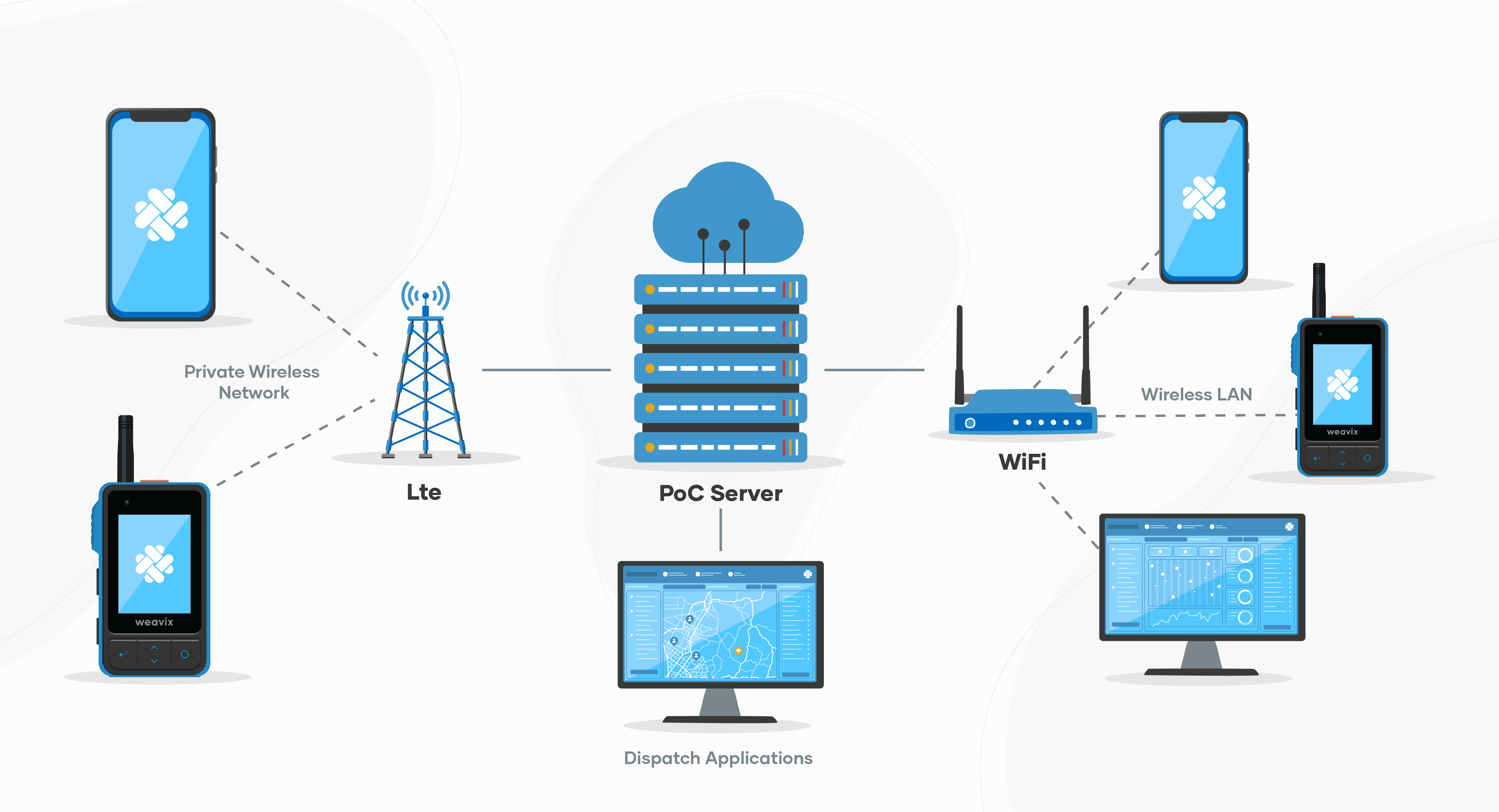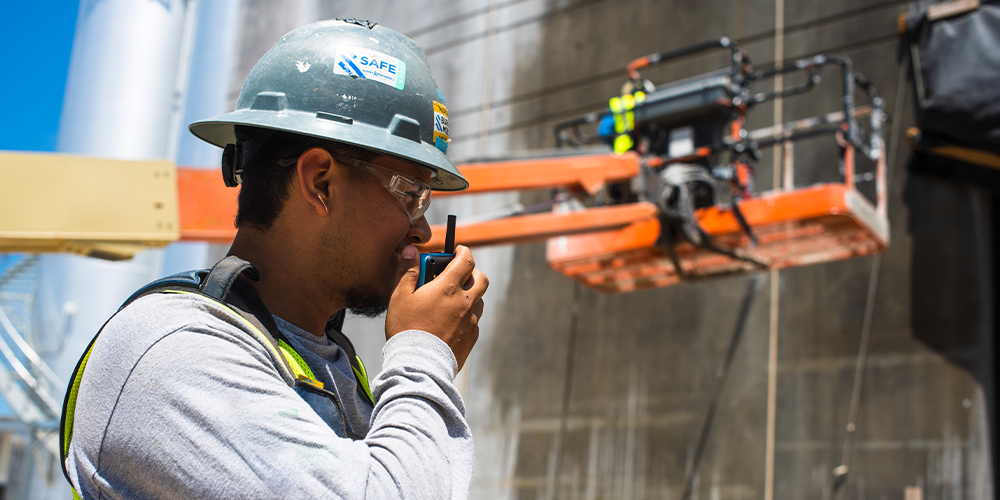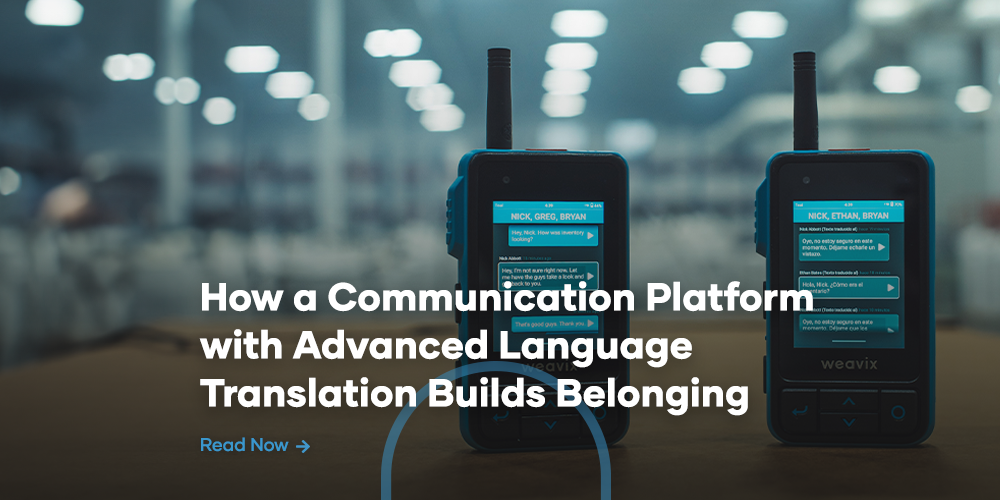The mid-1940s introduced push-to-talk (PTT) technologies to the world. In return, we saw a complete and near-instant revolution surrounding frontline communications. The technology was simple: communications were transmitted over long distances by holding down a button to talk and, when it was time to listen, they released it.
Immediately, users experienced the benefits of this new method of communication, and traction continued to grow into what it is now. When we think of frontline communication, we think of push-to-talk.
Today’s workers continue to use push-to-talk on the frontline. While push-to-talk radios have gone through their fair share of upgrades, push-to-talk technologies have remained largely the same until recently with Push-to-Three (PT3). But what is PT3? How does it work and is it inching us closer to another technological revolution for frontline communication?
Understanding Push-to-Talk (PTT) Communications
Before we get into what PT3 is, first we need to understand more about the technology powering push-to-talk and why it has been a staple for frontline communication for so long.
Push-to-talk allows for two-way communication by using what’s known as a half-duplex (HDX) model, meaning communication can flow in both directions but only one direction at a time. This enables rapid communication and leverages push-to-talk radios’ one-touch communication: users must press the button to send a communication and release it to receive a response. Phones use a full-duplex model, meaning both channels are always open.

All communications flow into a centralized server or transceiver by following a network and continue back on this network until they’re delivered to the right device. Businesses today choose enterprise-grade wireless networks for their reliability and to keep their frontline communications secure.
Push-to-talk technology has provided enterprises with instant, albeit limited, voice-only communication for their field workers.
What is PT3?
Push-to-Three (PT3) is a means of instantaneous communication that combines voice, picture, and video messaging using a button to switch between receiving and transmitting messages. weavix® introduced PT3 technologies to the global frontline workforce as part of its complete frontline communication platform to offer workers a more suitable and innovative way to communicate.
Like push-to-talk, PT3 also uses the half-duplex model of communication. The key difference is that users are not restricted to voice-only messaging. With one button, either through the mobile app or via the walt® smart radio, users have more communication capabilities that better reflect the variety of communication technology we have and use today: push-to-talk, push-to-picture, and push-to-video.
Push-to-Talk
Push-to-talk is the foundation of all the frontline communication we experience today. Instant voice messaging between users has transformed frontline workers, making them an asset to their enterprise.
During its introduction, industries saw a boom in communication and productivity with their field workers because of PTT technology and it’s still relevant in today’s workforce.
Radios are the most popular and preferred push-to-talk device, while phones with push-to-talk capabilities are becoming more common. Push-to-talk continues to benefit an enterprise’s operational efficiency and support a worker’s safety and thus maintains its lead against emerging frontline communication technologies.
Push-to-Picture
Have you ever been in a situation where you’re explaining a problem over the phone or through a chat log and the person on the other end is just not understanding? Your frontline workers have too.
This type of communication issue impedes on your worker’s ability to get their daily tasks done and, depending on the issue or length of delay, could lead to large and expensive consequences for the enterprise.
That’s exactly why PT3 includes picture messaging. Using the same idea as push-to-talk, users can now send picture messages instantly among their teams.
weavix® users have used push-to-picture to clarify any issues they’re experiencing, which is often accompanied by a text or push-to-talk message. By combining these methods of communication, workers and teams can effectively set priorities together and ensure workers get the most pressing matters done first.
Push-to-Video
65% of the world’s population are visual learners. As humans, our brains can process visual cues much faster than they do text and audio, meaning that visually based communication, such as pictures and video, is valuable in nearly any instance. PT3 makes it available for the frontline workforce.
Video messaging is the third and final aspect of Push-to-Three communications. Video communications with weavix® are available in three different methods:
- Video Messaging
Frontline workers can send a prerecorded video, along with audio, in a direct or group channel. Video messages let supervisors and team leads review current progress on their projects and gain insight into any delays or issues. - Live Video
Instead of a prerecorded video, workers can collaborate directly with one another by streaming between two users. This allows for a more instant and collaborative approach between two workers since they can immediately answer questions and provide assistance. - Video Conferencing
This is most like our live video option, however, this can be used with a new or existing group channel, instead of only a direct channel. Entire teams can come together, give updates on projects, and review deliverables, even when on the frontline.
Like how push-to-talk revolutionized frontline communication before, video communication is expected to have a similar, and transformational, effect on the global frontline workforce.
How Frontline Communications Benefit from PT3 Collaboration
PT3 gives frontline workers more ways to communicate during their workday. Push-to-talk largely restricts workers; voice-only communication works for some, but it’s not the ideal communication style for everyone. weavix® took many factors that are unique to the frontline into consideration when developing PT3 and how it could be more beneficial than traditional push-to-talk: loud work environments, complex maintenance issues, widespread work areas, and more.
What truly sets PT3 apart from traditional frontline communication is that each aspect complements the others when used as one system.
For example, if there’s an accident on-site, workers can send a picture message to responders and safety teams with a voice message for extra context. If a production line malfunctions, workers can send maintenance a video message to diagnose the issue quickly and they can respond with a voice message with a possible solution.
When used together, workers can easily communicate more effectively and more accurately than exclusively with voice communication. This also provides more context to the other parties involved in the conversation, allowing everyone to resolve issues faster and keep productivity up.
Do Frontline Workers Still Rely on Push-to-Talk?
Push-to-talk remains the frontrunner for frontline communication. It’s a simple yet important part of working out in the field and explains why it’s a major part of any communication solution for frontline workers. But that doesn’t mean workers can’t benefit from more communication options, especially when they’re available at the push of a button too.
PT3 makes the modern communication technology that people have become accustomed to and applies it to the workplace. What enterprises get are secure and comprehensive communications designed to make their frontline workforce more collaborative and more effective.
To see how your enterprise can benefit from every worker having PT3 capabilities, schedule a call today.
Subscribe
Don’t miss out on industry news and information. Subscribe to interweave, the official weavix™ blog today.




